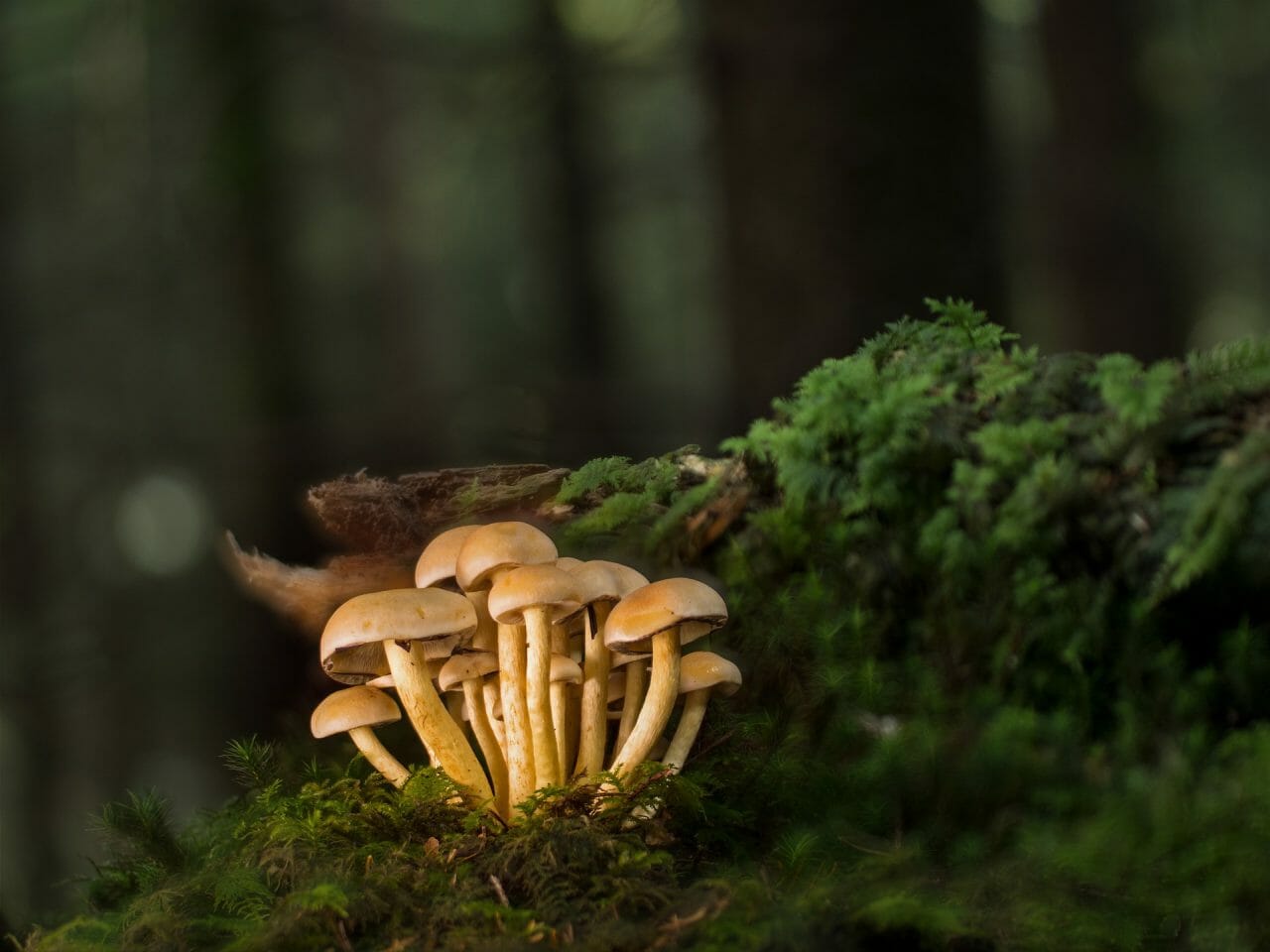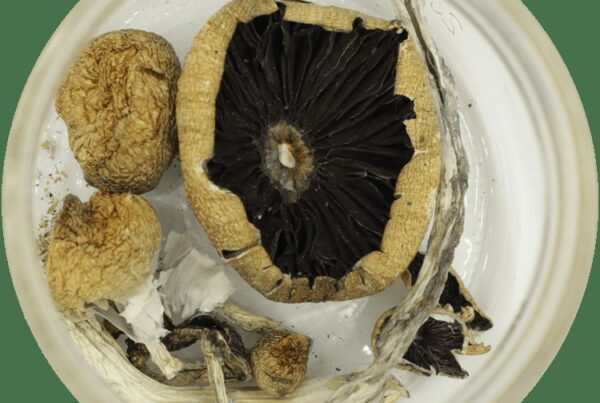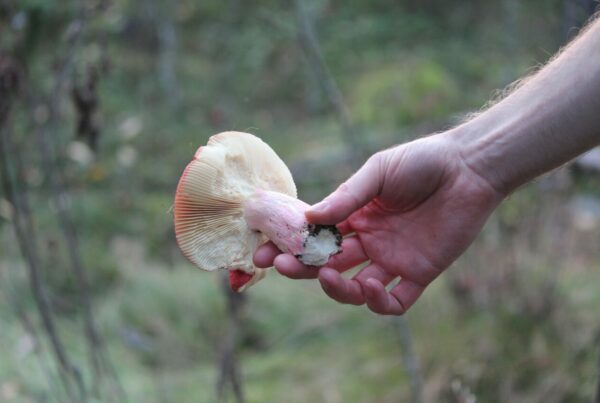For centuries, mushrooms have been held in high regard due to their wide-ranging uses, from delicious culinary ingredients to potent medicinal agents. Among the vast variety of mushrooms, one specific group within the fungal realm has garnered significant attention from enthusiasts and researchers alike – psilocybin mushrooms. These magic mushrooms, known for their consciousness-altering properties due to the psilocybin content, are far from your average fungus and have been cultivated and consumed for centuries.
While there are 200 species of psilocybin-containing mushrooms spread across the globe, their potency varies significantly. Among them, over 5 types of the most potent magic mushrooms exist, each comprising a variety of potent strains.
This article delves into the potency of different mushroom species. Let’s journey into the fascinating world of the most potent magic mushroom strains, and their effects on human consciousness and beyond, despite the limited information available about these unique fungal species.
Key Points:
- Different strains of psilocybin mushrooms can greatly vary in the intensity of the experiences they provide, due to differences in their psilocybin content.
- The primary factor determining the potency of psychedelic mushrooms is psilocybin, their active compound. Generally, strains with higher psilocybin concentrations are more potent.
- The most potent strains of magic mushrooms can inspire an array of experiences, from vivid visualizations to altered time perception, and deep introspection, making them an area of interest for both recreational and therapeutic usage.
What Factors into the Potency of Shrooms?
To understand the science behind magic mushroom potency, it’s essential to explore the compounds, contributing factors, and precautions that shape the psychedelic experience. At the heart of this exploration is psilocybin, one of the most prevalent active compounds in magic mushrooms.
When consumed, psilocybin transforms into psilocin, the compound in mushrooms that interacts directly with the brain’s serotonin receptors, resulting in altered perceptions, intense visual experiences, and introspective insights. However, the potency of mushrooms can vary considerably, influenced by several factors.
Understanding these variables is vital for those seeking a predictable and safe experience, as the use of mushrooms can be significant. High doses of psychedelic mushrooms
Significant shifts in perception and even vivid hallucinations can arise from . By adhering to precise dosages, users can more confidently navigate the intriguing realm of these substances. This also aids in reducing potential hazards, creating a safer and more enlightening encounter.
Deciphering the Enigma of Magic Mushrooms and Their Various Types
A wide array of fungi, known as magic mushrooms, exist, each capable of inducing altered mind-states. However, not all of them fit the conventional definition of a magic mushroom.
Although many mushrooms have psychotropic properties, not all qualify as magic mushrooms. Take the commonly known fly agaric mushroom; it has psychotropic features but its hallucinogenic or hypnotic effects are different from those typically associated with magic mushrooms.
The Psilocybe genus houses most of the highly potent mushroom species. Within this genus, there are over 180 species of psilocybin mushrooms, each with different strains. It’s crucial to mention that many strains look similar, making their identification in the wild difficult unless one is an expert.
Additional types of magic mushrooms include:
- Panaeolus
- Conocybe
- Inocybe
- Pluteus
- Gymnopilus
Revealing the Most Potent Varieties of Magic Mushrooms
Psychedelic mushrooms, with their broad spectrum of effects and potential therapeutic advantages, have captivated humanity for centuries. The various species of psilocybin mushrooms present a cornucopia of options, each with a unique potency level.
Are you interested in the most potent, quintessential magic mushroom? Let’s explore the top ten most potent magic mushroom strains, analyzing their properties and potency levels.
| Mushroom Strain | Potency Level | Description |
| Psilocybe azurescens | Very High | Psilocybe azurescens, recognized as the most potent among all magic mushrooms, is native to the US West Coast. It can induce intense experiences. However, caution is advised as larger doses may cause temporary paralysis. |
| Panaeolus cyanescens | Very High | This strain ranks among the most powerful mushrooms, surpassing even the intensity of Psilocybe cubensis. It boasts a psilocybin and psilocin content two to three times that of P. cubensis. Due to its adaptability to indoor cultivation, it is an excellent choice for beginners. |
| Psilocybe semilanceata | Very High | Psilocybe semilanceata, also referred to as “liberty caps,” is a prevalent magic mushroom species found throughout northern Europe. While psilocybin levels vary, some samples have shown the highest psilocybin content ever recorded in wild mushrooms. |
| Psilocybe cyanescens | Very High | Commonly known as wavy caps, the potency of this mushroom is high, with psilocybin and psilocin content ranging from 0.3% to 1.68% and 0.28% to 0.51% respectively. These mushrooms are adaptable, favoring environments with woody debris, and have a worldwide distribution. |
| Psilocybe bohemica | High | Psilocybe bohemica, mostly found in Central Europe, possesses psilocybin concentrations ranging from 0.11% to 1.34%. Due to its similarity to the deadly Galerina mushrooms, caution is advised when hunting for this variety. |
| Psilocybe baeocystis | High | With names like “Bottle caps,” “knobby tops,” “Blue bells,” and “Olive caps,” Psilocybe baeocystis is widespread across the Pacific Northwest. It commonly appears in various growth conditions — from solitary to clustered — often found on multiple substrates like ground bark, wood chips, peat moss, and occasionally on lawns or pastures. |
| Psilocybe cubensis | High (Variable) | Psilocybe cubensis mushrooms are favored by beginners for their ease of indoor cultivation. Despite the varying potency among subspecies, a consistent experience is guaranteed when obtained from trustworthy sources. Dried mushrooms contain 0.14% to 0.42% psilocin and 0.37% to 1.30% psilocybin. |
| Psilocybe tampanensis | Moderate to High | Psilocybe tampanensis, also called “philosopher’s stones” or “magic truffles,” is known to contain approximately 0.68 percent psilocybin and 0.32 percent psilocin. When dried, these mushrooms harbor up to 1% of psilocin and psilocybin. The term “truffles” refers to the hardened sclerotia produced by the mycelium, even though they are not technically actual truffles. |
| Psilocybe samuiensis | Moderate to High | Psilocybe samuiensis is a fascinating species from the Ranong Province in Thailand. These mushrooms thrive in the lush environments of the small tropical island of Koh Samui, at Angkor Wat in Cambodia, and even as far as northern Australia. The psilocybin and psilocin content in the fruit bodies range from 0.023–0.90%. |
| Conocybe cyanopus | Moderate to High | Conocybe cyanopus, a less recognized member of the magic mushroom family, bears a striking resemblance to several poisonous varieties that thrive in similar environments.The Significance of Correctly Identifying Magic Mushrooms Sharing Habitats |
Factors Influencing the Potency of a Magic Mushroom Strain
The potency of psychedelic mushrooms is generally measured by the concentration of psilocybin and psilocin. This strength varies significantly between different strains and even within the same species, due to the complex interplay of natural and environmental factors.
Understanding these factors is vital for both growers and users, as they can influence the intensity and reliability of the psychedelic experience. In this article, we will examine the main factors determining the potency of various highly potent magic mushroom species to shed light on the intricate science underlying these remarkable fungi.
Mushroom Species
The levels of psilocybin and psilocin vary among different species of magic mushrooms. Some species of potent psychedelic mushrooms naturally produce higher concentrations of these compounds, leading to increased strength.
Genetic Variability
Genetic differences within a single mushroom species can result in potency variations. Certain genetic strains may produce mushrooms with higher levels of psilocybin and psilocin, while others may contain lower levels.
Cultivation Conditions
The environment in which magic mushrooms grow can greatly affect their potency. Factors like temperature, humidity, light, and the makeup of the substrate (the material on which psilocybin mushrooms grow) can all affect the final psilocybin content. This explains why cultivated mushrooms often have different potency levels compared to those grown in the wild.
Harvest Timing
The timing of the harvest can influence mushroom potency. Mushrooms tend to have higher potency when harvested just before spore release. Harvesting either too early or too late can result in reduced potency.
Storage and Drying
Proper drying and storage methods are critical to preserving mushroom potency.
Insufficient drying methods or excessive exposure to heat or light can degrade the active compounds in fresh mushrooms, resulting in a decline of their overall potency.
Ripeness
The level of ripeness at which mushrooms are harvested is crucial. In some cases, mushrooms that are in the process of ripening might contain higher levels of psilocybin than fully matured ones.
Choosing the Strain
Different strains within the same mushroom species may have distinct levels of potency. Growers often select specific strains to cultivate based on the desired potency.
Breeding
In some cases, deliberate crossbreeding of mushroom strains can yield new strains with unique potency characteristics. This may occasionally lead to the development of strains with a potency that surpasses their parent strains.
Guidelines for Dosing Different Potencies of Psilocybin in Magic Mushroom Species
To effectively navigate the various types of psychedelic mushrooms, a solid understanding of dosing is required. A safe and pleasurable psychedelic experience necessitates careful consideration of factors like strain, personal tolerance, and the effects you wish to achieve.
Here are a few tips for dosing different types of magic mushrooms with varying levels of potency.
- Identify the Species: With a wide range of mushroom species, it’s crucial to know the specific species you plan to consume. Research their potency levels and gather comprehensive information on magic mushroom species for safe usage.
- Start with a Low Dose and Increase Slowly: Regardless of the species, it’s always wise to begin with a modest dose, especially if you’re unfamiliar with the strain or your own reaction. If necessary, the dose can be incrementally increased in subsequent sessions.
- Use a Precision Scale: It’s recommended to use a precision scale for precise measurement of your mushroom dose. This enables you to control the amount you consume and minimizes the chance of accidental overconsumption.
- Take Your Body Weight into Consideration: Your body weight can influence the effect of magic mushrooms. Typically, experts suggest a dose of 0.2 to 0.5 grams per kilogram of body weight. Adjustments might be required based on individual sensitivity.
- Consider Tolerance Levels: If mushrooms, your recent consumption could potentially increase your tolerance. To fully experience the effects of your chosen dose, consider taking a tolerance break.
- Determine the Desired Experience: The reasons for your magic mushroom use can affect the dose. Lower doses, commonly referred to as microdosing, are often used for the trip. While under the influence of these potent hallucinogenic mushrooms, minutes can feel like hours, seemingly freezing time.
- Deep Introspection: High doses of hallucinogenic mushrooms can often provoke profound introspection and self-analysis. This can lead to a deeper comprehension of oneself and one’s role in the universe.
- Reality Distortion: Psychedelic mushrooms can alter your perception of reality. You may perceive colors, shapes, and patterns differently than when sober. This change in perception is often a defining feature of the psychedelic experience.
- Vivid Hallucinations: Powerful mushrooms can induce intricate and vivid visual hallucinations, ranging from simple geometric designs to complex, dream-like scenarios. These hallucinations can be both captivating and awe-inspiring.
- Uplifted Mood: Many users report a profound sense of joy and happiness while under the influence of psychedelic mushrooms. This uplifted mood can foster feelings of unity and interconnectedness.
- Enhanced Creativity: Consuming a highly psychedelic mushroom can boost creativity and inspiration in some users. This can lead to innovative and imaginative thoughts and ideas.
- Altered Time Perception: The perception of time can be altered or even lose its relevance during a mushroom trip. Under the influence of potent psychedelic mushrooms, minutes can seem like hours, and time can appear to stall.
- Deep Self-Reflection: High doses of psychedelic mushrooms can often foster profound self-reflection and self-analysis. This can lead to a deeper understanding of oneself and one’s place in the grand scheme of the universe.
- Distorted Perception of Time: With magic Altered Time Perception: Upon consuming magic mushrooms, you may experience a shift in your perception of time. Minutes may seem like hours, or the opposite may occur, creating a sense of timelessness.
- Intensive Self-Reflection: Consuming potent magic mushrooms can often trigger a deep introspective journey, allowing users to thoroughly reflect on their thoughts, emotions, and life experiences. This process of self-reflection can serve as a form of therapy and provide important insights.
- Spiritual or Mystical Encounters: Some users report undergoing profound spiritual or mystical experiences during their magic mushroom trips. These experiences can include feeling a unity with the universe, encountering divine entities, or reaching a state of transcendence.
- Emotional Liberation: Mushrooms can elicit concealed emotions, helping individuals confront and manage them. This emotional release can serve as a catharsis and foster healing.
- Enhanced Sensory Perception: Sensory perception can be significantly intensified, with users noting heightened sensitivity to sounds, textures, and feelings. This can be enjoyable and, at times, overwhelming.
What to Anticipate when Using Potent Psychedelic Mushrooms
Embarking on a journey with the most potent psychedelic mushrooms can be a transformative and momentous experience. However, it’s essential to approach this experience with caution and mindfulness. Below is a list of potential effects you may encounter when consuming the most potent strains of psychedelic mushrooms, including explanations for each:
Conclusion
In the intriguing universe of psychedelic mushrooms, potency is a key factor shaping the intensity and depth of the experience. We’ve traversed the world of the most potent mushroom strains, each possessing distinct characteristics and effects. From the awe-inspiring Psilocybe azurescens to the reflective Psilocybe cubensis, these fungi offer a spectrum of experiences waiting to be discovered.
It’s important to emphasize the need for responsible and informed use. Handling these powerful mushroom strains with caution and respect is crucial. Understanding dosage and setting is key to ensuring safety and enhancing experiences.
The dynamic field of psychedelics, with its potential therapeutic benefits, underscores the importance of continued research and responsible exploration. The domain of potent mushroom strains and online shrooms offers a significant platform for self-exploration, healing, and deepening our understanding of the enigmas of consciousness.
Frequently Asked Questions
Do all varieties of magic mushrooms possess the same potency?
No, the potency of mushroom strains can greatly vary. Differences in psilocybin and psilocin levels, genetic composition, and growing conditions can lead to significant variations in potency across different strains. Some strains are notably more potent than others.





